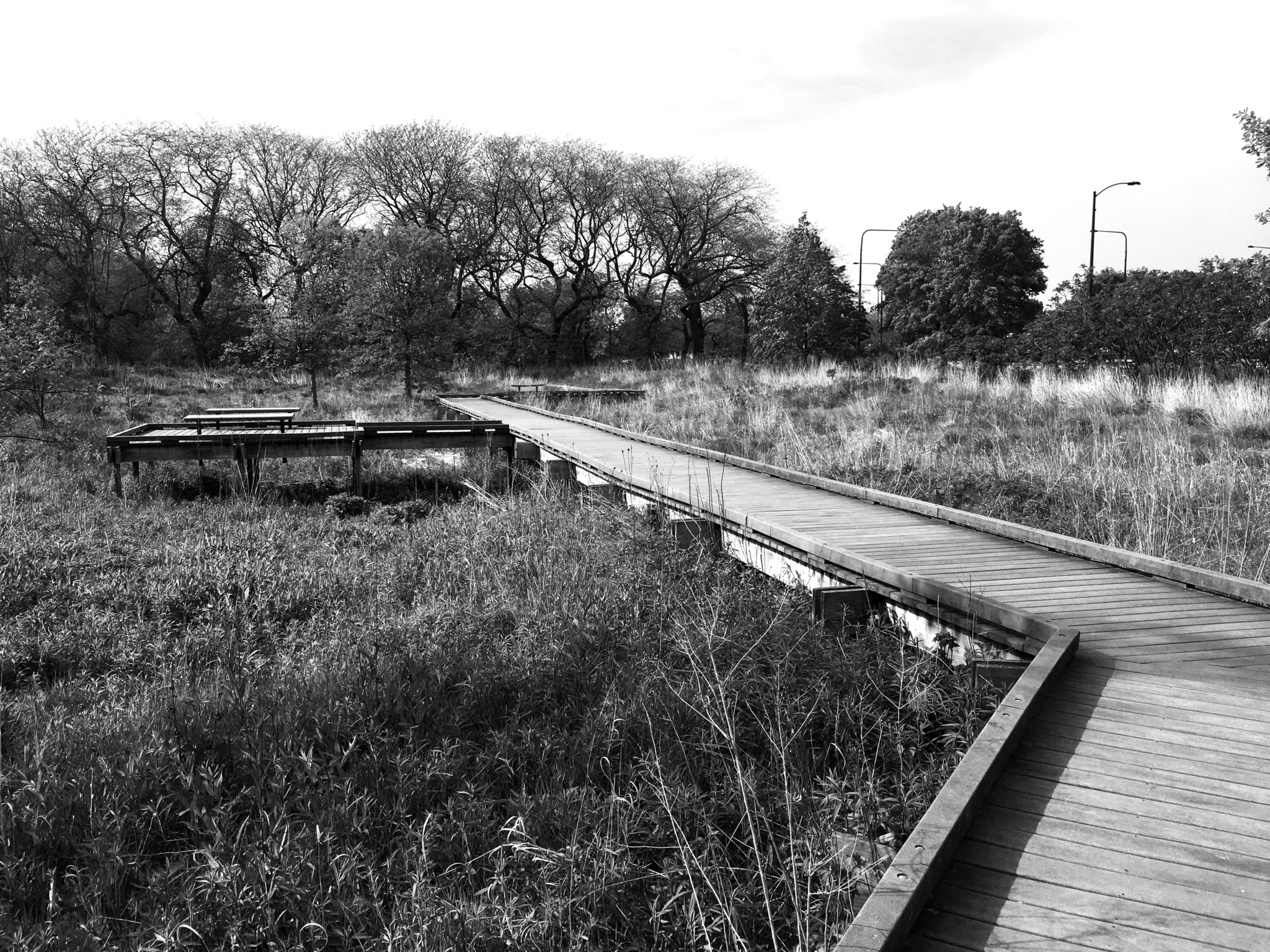Traveling north on the Lakeshore Trail, you may have noticed that at around 33rd Street the manicured lawn of the surrounding grass shifts to prairie grasses and shrubs. This marks one of the borders of the Burnham Wildlife Corridor, one of the Chicago Park District’s designated natural areas.
The Park District began the process of rehabilitating the wildlife corridor in 2000, building trails and weeding out invasive species, replacing them with native plant species from prairies, savannahs, woodlands, and marshes. The Wildlife Corridor stretches from 47th to 39th Streets on the west side of Lake Shore Drive and from just north of 39th Street to the McCormick Bird Sanctuary at 24th Street on the east side, right up against the water. This habitat enhancement is ongoing and will continue indefinitely, depending on funding and seasonal changes.
“We sort of have to live as the plants grow,” Naureen Rana, a project manager for the Park District, said. “We see our role with the natural areas in perpetuity. We’re always going to be doing enhancement, we’re always going to be weeding invasives.”
The Park District has teamed up with the Field Museum and a host of nonprofits from the surrounding communities to start the Roots and Routes Initiative. Roots and Routes aims to sustain wildlife and to improve access to nature for communities nearby.
“It begins with the acknowledgement that not everyone comes to nature in the same way,” said Jacob Campbell, an urban environmental anthropologist who leads the Field Museum’s social science team. “There are a lot of different cultural values and ways in which heritage and history shape the way that people experience the natural world or see nature as a part of their lives.”
The project began when the Park District reached out to the Field Museum for help with outreach in 2013. Since then, the Park District and the Field Museum have partnered with Sacred Keepers Sustainability Lab, Centers for New Horizons, South Side Community Arts Center, Bronzeville Community Development Partnership, Contratiempo, and the Chinese-American Museum, among others.
Campbell stressed the collaborative nature of the partnerships. “[We are] trying to create platforms for residents and organizations in these communities not only just to communicate but to be decision makers at the table for how a natural area develops, how a green space is co-created and framed,” he said.
Since 2013, the Roots and Routes Initiative partnerships have resulted in a variety of programs for the Wildlife Corridor, including a recently completed art installation project called Gathering Spaces. This project took input from community organizations and recruited local artists to create five different art spaces designed for people to gather along the trails.
A main pillar of the Roots and Routes Initiative is youth engagement. The Green Ambassadors program provides paid internships for about fifteen high school students every year from Chinatown, Bronzeville, Little Village, Pilsen, and surrounding communities. The students receive intensive training in social and ecological research methods and then use those skills to tackle a park- or natural area-related issue in their community. In one project last year, students compiled a list of recommendations to the developers of Paseo, a High Line–style project that would connect Pilsen and Little Village.
Lakefront Legend and Lore, another youth-oriented program in a partnership with Centers for New Horizons, trained students to conduct interviews and had them gather oral histories specifically related to the lakefront. The students uncovered an alternative history of the Burnham Wildlife Corridor, distinct from the narrative of ecological rehabilitation, replete with legends of bogeymen meant to keep children out of the Burnham Park Corridor, which had been a place for teenagers to loiter and mess around before it was redeveloped by the Park District.
According to Matthew Freer, assistant director of landscape and natural areas for the Park District, the Roots and Routes Initiative rethinks what it means to engage with natural space.
“We’re shifting to a model of participation in the natural area versus simply preservation of land,” he said .A lot of landholders in the natural world setting tend to err on the side of preservation in the fear of stomping on precious plants…but we want to make sure it’s a resource for Chicagoans.”
The natural areas program has grown by hundreds of acres and the Park District hopes to expand it by hundreds more in the next few years. The Roots and Routes Initiative sets a precedent for a new way to engage with and develop that natural space—it caters to not just birds, butterflies, and native plants.
Did you like this article? Support local journalism by donating to South Side Weekly today.



